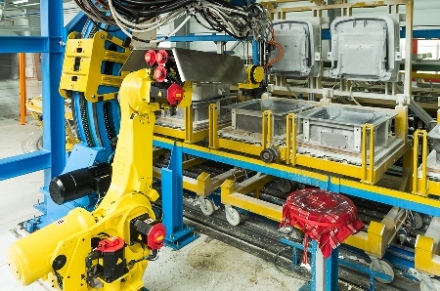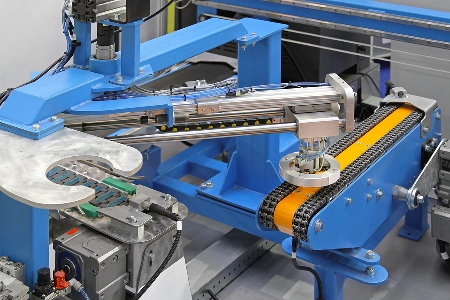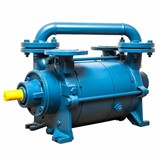Still, many decision-makers shy away from automation, as there are no guarantees an investment will be recouped or in what timeframe.
Maintaining the status quo in a competitive global market is often a mistake, as there is an overwhelming link between automation and ROI. Companies that commit to proper research, investigation, and implementation of the project can be fairly certain expected results are realised.
Automation ROI overview
This is an intriguing time for manufacturers. Transportation costs are rising and an expanding middle class in India and China is leading to labour costs escalating by more than 20 per cent per year.
In light of higher costs to import products, automation is creating opportunities for domestic production. Robotics have traditionally been seen as a threat to workers, but the ability to expand domestic manufacturing actually means there could be more job opportunities for skilled labourers at home.
Several countries are beginning to see a sharp trend in "reshoring", or bringing manufacturing back into the country.
Lisa Ellram, a professor and supply chain management specialist at Miami University of Ohio, claims that innovations in manufacturing are encouraging the shift. "Instead of hiring people, we're using robots."
A great case study can be found with a growing offshoot from Queensland Yoghurt. Expat Koel Thomae was visiting family in Noosa in 2005 and became enamoured with the sweet, tangy flavour of the local yoghurt. She eventually reached an agreement with Paul and Grant Mathewson, the two brothers behind the Queensland Yoghurt company.
When demand was too much for their initial Spartan infrastructure, they moved to an automated process that tripled their capacity without requiring an increase in labour costs. Scaling is a common challenge, but one on which Noosa was able to capitalise.
"We had no expectations that our product would take off so quickly. When we picked up some large retail customers, it became a reality that we needed to expand our facility – and expand quickly to fulfil orders. The only way we could increase capacity and keep up with demand was to automate," said Wade Groetsch, COO, Noosa Yoghurt.
"Not only that, but we foresaw demand increasing well into the future, so in order to meet our production goals, we needed a system that would monitor the process, collect data and allow for easy future expansion."
Research
As demonstrated by Noosa, there is typically an issue at play that leads a manufacturer to consider automation. It could simply be a supply issue or an attempt to control or reduce payroll expenses, but often there are quality concerns or reliability issues behind an investment in automation.
For example, an automotive manufacturer was struggling with intermittent damage to a tooling machine. A $5,000 repair cost per occurrence, along with the expense of scrapping materials and the loss of production, led them to research a different methodology.
They moved to a vision guided robotics solution and saw a positive return in just six months.
Manufacturers should begin looking at their scrap inventory to determine what concerns exist on the production floor. If errors are occurring across the plant the solution may not be as simple as automation.
However, if there is a single or a few processes that are driving waste, automation may be the answer. Proper due diligence will reveal if a training or educational deficiency can fix the issue or if it is time to find an automation solution.
Bring production employees into the discussion of what is and isn't working on the floor, as they witness the issues first-hand.
Investigation
Individual ROI will obviously vary, but proper vendor and product investigation will help hone expectations. To that end, the research phase should provide answers on several critical questions:
- Value of scrap that would be eliminated
- Relative expense of current down time
- Cost of warranty replacements that could be eliminated
- Current and projected repair costs of equipment that would be replaced
- Operational costs of current equipment (power, maintenance, supplies, etc)
- Expected market value (re-sale or scrap metal) of equipment to be replaced
- Impact automation would have on safety and related costs
This information is imperative when investigating potential vendors and what level of automation they can provide, as it is the baseline for potential savings.
There are numerous questions that need to be explored with vendors. One of the most important, but sometimes overlooked, is ongoing maintenance costs. The initial equipment is a capital expenditure, but expected future costs need to be accounted for, either as an amortised part of the initial cost or as future expenses.
The initial capital costs generally include the following:
- Machinery
- Installation
- Infrastructure upgrades (physical plant changes, electrical upgrades, new networks, etc)
- Software licenses
- Employee training
- Consultant fees and general project expenses
Projected future expenses should include:
- Maintenance costs (internal and external)
- Repair costs (internal and external)
- Operational costs (power, lubricants, supplies, etc)
- Product upgrades
- Ongoing employee and system training
- Future software licensing and technical support
- Potential future infrastructure upgrades
The crux of the investigation process is offsetting expected costs with projected savings. Upper management will rely on this analysis when making their buying decision.
Implementation
Once the new process begins there are a few keys to ensure the best gains are realised. If the change meant a reduction in the labour force, morale could be a concern. Human Resources will be valuable in explaining how changes are necessary to ensure future viability of the company and the balance of the workforce.
Perhaps the most important piece of the puzzle is employee education. Utilise the expertise of the manufacturer and system integrator before, during and after the install so new equipment can be fully capitalised on.
There are no guarantees that automation will provide a positive ROI. However, thorough research and planning will guide companies to the best solution for their manufacturing needs. Proper implementation of an industrial automation effort will help garner a positive ROI and keep manufacturers competitive.















